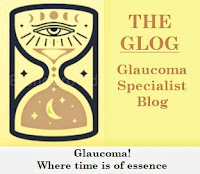Glaucomatous optic neuropathy involves characteristic optic disc as well as retinal nerve fiber layer (RNFL) structural damage and related functional defects.
Tests of structural integrity include the Heidelberg Retinal Tomograph 3 (HRT3, Heidelberg Engineering GmbH, Heidelberg, Germany) and the continuously evolving technology of optical coherence tomography (OCT).
The HRT3 is a confocal scanning laser tomography (CSLO) device that uses a diode laser (670 nm) to scan the retinal surface at multiple consecutive parallel focal planes and produces repeatable and reproducible three-dimensional (3D) topographical images of the ONH and peripapillary RNFL. After image acquisition, the margins of the optic nerve head (ONH) need to be outlined by a manually drawn contour line to calculate ONH stereometric parameters. HRT3 also provides two different algorithms for ONH anatomy classification: the Moorfields regression analysis (MRA) that requires a contour line to be placed, and the newer contour-line independent Glaucoma Probability Score (GPS). The quantitative and objective measures of these structures are consequently classified as within normal limits (WNL), borderline, or outside normal limits (ONL) by automatic comparison with an ethnic-selectable normative database of eyes.
Deep range imaging OCT (DRI-OCT, Triton, Topcon, Tokyo, Japan) is a recently introduced swept-source OCT (SS-OCT) that uses a center wavelength of 1,050 nm and a bandwidth of approximately 100 nm compared to the fixed 850 nm wavelength of spectral-domain OCT (SD-OCT). The instrument achieves a high scan speed (100,000 A-scans/second) that allows for the acquisition of high-quality wide-field images containing both the ONH and the macula in a 12 mm × 9 mm single scan. SS-OCT, similar to SD-OCT, also provides separate standard macula and optic disc scan modes. Both thickness measurement values and normative comparisons are provided for all SS-OCT measurements.
Kourkoutas and colleagues from Greece, have performed a study to determine the diagnostic performance of the ONH, macular, and circumpapillary retinal nerve fiber layer (cpRNFL) thickness measurements of wide-field maps (12 × 9 mm) using SS-OCT compared to measurements of the ONH and RNFL parameters measured by HRT3.
They also evaluated the diagnostic ability of wide-field DRI-OCT thickness measurements (optic disc, RNFL, and macular) to differentiate glaucomatous from healthy eyes and compared them with the six main ONH stereometric parameters as well as with the GPS and MRA classification algorithms of the HRT3.
The authors found the highest sensitivities were achieved by the DRI-OCT categorical parameters of Superpixel-200 map and cpRNFL (12 sectors) thickness analysis. The best performing HRT3 continuous parameter was rim volume (AUC = 0.829, 95% confidence interval (CI) = 0.735-0.922), and the best continuous parameter for DRI-OCT wide-field was vertical CDR (AUC = 0.883, 95% CI = 0.805-0.951), followed by total cpRNFL thickness (AUC = 0.862, 95% CI = 0.774-0.951). Area under the curve (AUC) for disc area, rim area, linear CDR, and RNFL thickness were not significantly different between the two technologies. Using either the most or the least specific criteria, SuperPixel-200 map always showed the highest sensitivity among the categorical parameters of both technologies (82.1% and 89.7%, respectively). The highest sensitivity among HRT3 classification parameters was shown by MRA and GPS classification algorithms.
The study concluded that both wide-field DRI-OCT maps and HRT3 have good diagnostic performance in discriminating glaucoma from healthy eyes. However, DRI-OCT thickness values and normative diagnostic classification report the best performance.






No comments:
Post a Comment